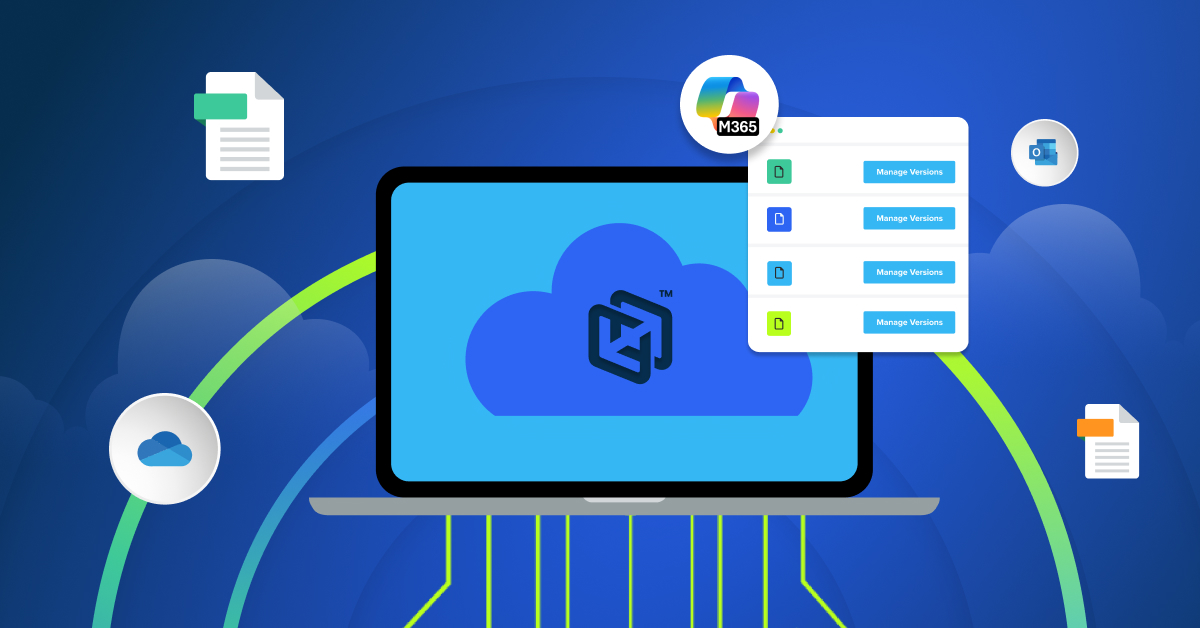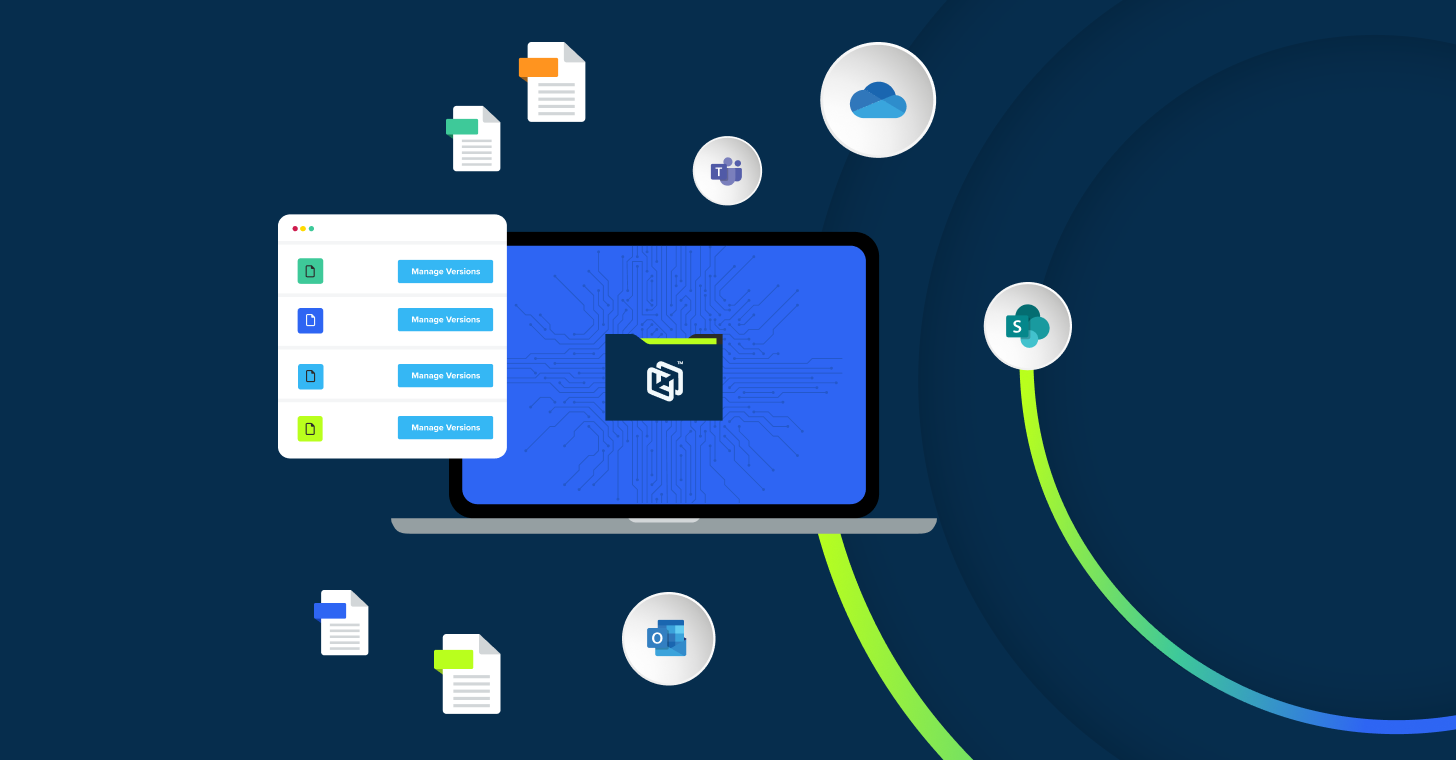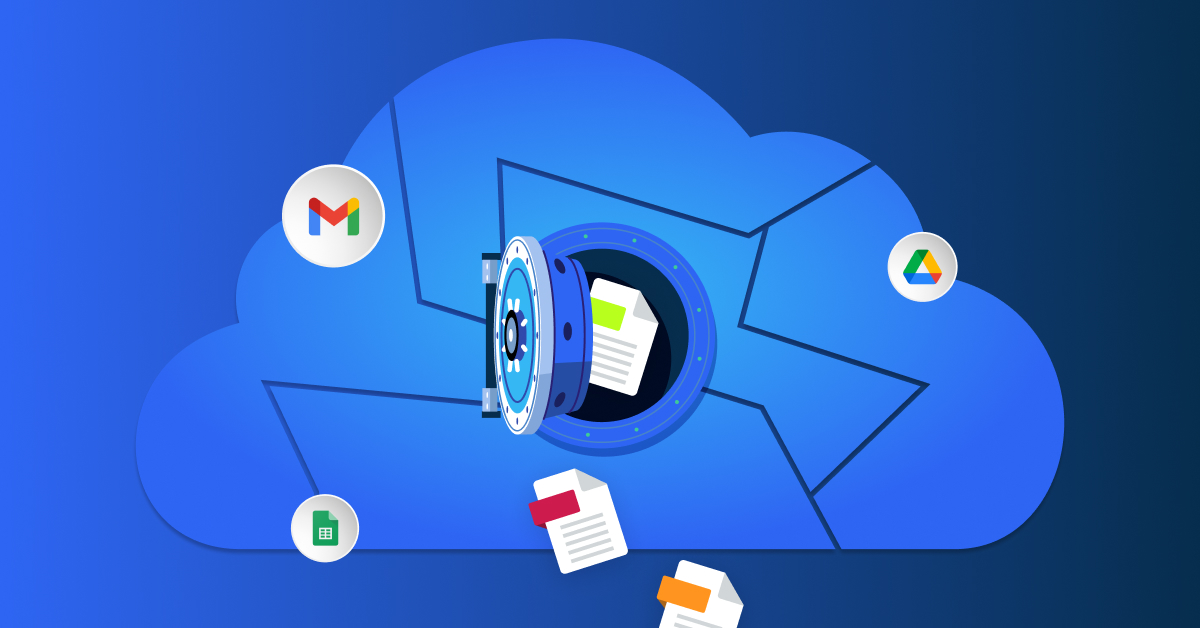
The Hidden Cost of Microsoft 365’s Success
Balancing cost, compliance, and continuity in the era of Microsoft 365 exponential data growth
Microsoft 365 runs almost everything now — files, chats, meetings, collaboration. It’s the nervous system of modern IT. But the more you rely on it, the more complex it becomes to protect.
Most enterprises see their Microsoft 365 data grow by roughly 20% each year. Teams channels multiply, SharePoint sites expand endlessly, and OneDrive becomes a digital storage closet that never gets cleaned out. Before long, storage bills rise and compliance gets harder to manage.
Many IT leaders still assume Microsoft 365 automatically backs up their data. In reality, Microsoft provides high availability with uptime, and does not provide long-term data retention (data is retained only between 30 and 180 days), or retention of any deleted items. This is no guarantee of full data recovery, and doesn’t safeguard against ransomware, permanent deletion, or data loss when user accounts are removed.
Storage often accounts for up to 70% of total backup and recovery costs, and that number climbs quickly when organizations retain data they’ll never need again.
The result is predictable: you pay to store data nobody uses, legal teams worry about retention rules, and leadership assumes everything is safe because it lives in the cloud.
It’s time to move from passively going with the standard Microsoft workflow to intentionally managing your data and your costs.
Backup and Archiving: A Single Strategy for Modern Data Resilience
Backup and archiving sound similar, but they serve distinct purposes.
| Function | Purpose |
| Backup | Protects data from loss or corruption |
| Archiving | Preserves data for governance, compliance, and cost optimization |
When these functions overlap without a clear strategy, the result is wasted storage and compliance gaps. Anyone who has stumbled across a forgotten SharePoint site from years ago knows the feeling.
A stronger approach treats data protection as a continuous process:
Active collaboration → Backup → Archive → Retention → Deletion
Managing that lifecycle deliberately helps you reduce storage costs, simplify compliance, and accelerate recovery when incidents occur.
Organizations that adopt a lifecycle model often see major cost reductions — some have achieved up to 65% lower storage expenses in Microsoft 365 environments.
The takeaway: backup and archiving aren’t separate tasks. They’re two parts of one strategy for modern data resilience.
Five Best Practices for Microsoft 365 Backup and Archiving
1. Rethink Storage Tiers Before Finance Does
Not all data requires high-performance storage. Classify what’s active, what’s inactive, and what must be retained for compliance. Move cold data to lower-cost, immutable storage tiers.
CrashPlan automatically deduplicates data and finds unused data so it can be stored more efficiently. The data is deduplicated, compressed, and moved to lower-cost, immutable storage without compromising compliance or recoverability. It’s a simple change that cuts costs while improving governance.
2. Automate Archiving to Stay in Control
Manual retention sounds manageable until someone asks for a presentation from two years ago. Automation is the only sustainable way to stay ahead.
Use policies based on activity, sensitivity, or age. For example, automatically archive inactive SharePoint data after six months while retaining high-value information for legal hold.
CrashPlan identifies and archives data according to policy-driven criteria such as file size, age, or activity — without altering site structures or permissions. Once automated, retention simply takes care of itself.
3. Restore Only What You Need
When a user deletes a file, folder, or email, a full restore is the last thing you want. Granular recovery enables targeted, efficient restores.
CrashPlan supports file-level and item-level recovery across Exchange, OneDrive, and SharePoint. That means faster restores, less disruption and downtime.
4. Build Compliance Into Every Backup
Compliance shouldn’t be an afterthought. Retention, legal hold, and deletion rules belong directly within your backup workflows.
Embedding compliance simplifies audits, supports mandates like GDPR and SEC 17a-4, and eliminates redundant data copies.
CrashPlan combines backup and archiving into a single solution and workflow. So you manage fewer software tools, workflows and copies of your data, reducing exposure and compliance failures across your organization.
5. Empower Users to Help Themselves
Every restore ticket steals time from your IT team. Allowing users to recover their own files saves time and keeps work flowing.
CrashPlan’s self-service recovery gives users secure access to restore what they need, while you retain control over policy and permissions. The result: fewer support requests, faster recovery, and happier users.
Governance and Compliance
Weak governance does more than inflate storage costs, it increases business risk.
Without lifecycle management, organizations face shadow retention, painful eDiscovery, and difficulty proving data integrity during audits. Regulators are paying attention, and “Microsoft handles it” is no longer an acceptable answer.
Automation is now essential for both compliance and backup. Together, they form the backbone of enterprise data resilience.
The CrashPlan Perspective
True resilience isn’t about where your Microsoft 365 data lives. It depends on how intelligently it’s managed from creation to deletion.
CrashPlan unifies backup, archiving, and compliance in one platform, simplifying operations and eliminating blind spots.
With CrashPlan, you can:
- Automate retention and archiving through policy
- Optimize storage to reduce costs — securely leveraging existing OneDrive capacity to minimize added storage spend, or using low-cost CrashPlan data center and cloud options
- Recover files instantly at the item level
- Maintain immutable, auditable protection that satisfies compliance requirements
This approach protects everything, without keeping everything.
When you balance cost, compliance, and continuity, you have the foundation for painless, modern data resilience.
Next Step
Check out this demo to see how CrashPlan helps enterprises unify Microsoft 365 backup, archiving, and compliance into one intelligent data protection strategy.






